Whither bone skates research?
Author Bev Thurber, 2021
Introduction
Ice skates made from animal bones have been found at sites dating from the Bronze Age and all the way through to the twentieth century. They are pretty common at medieval sites in northern Europe. In their simplest form, bone skates are just animal bones—usually the metapodia of horses and cattle—with the dorsal side flattened to make a smooth gliding surface. They get more complex, though, and some are extensively carved. Skating on them wasn't like skating on modern ice skates. Instead of pushing with your feet, you use one or two poles to push. I've tried this and it works pretty well, though I find it more comfortable to push with two poles than one. Since your feet don't come off the ice, tying the skates on is unnecessary.
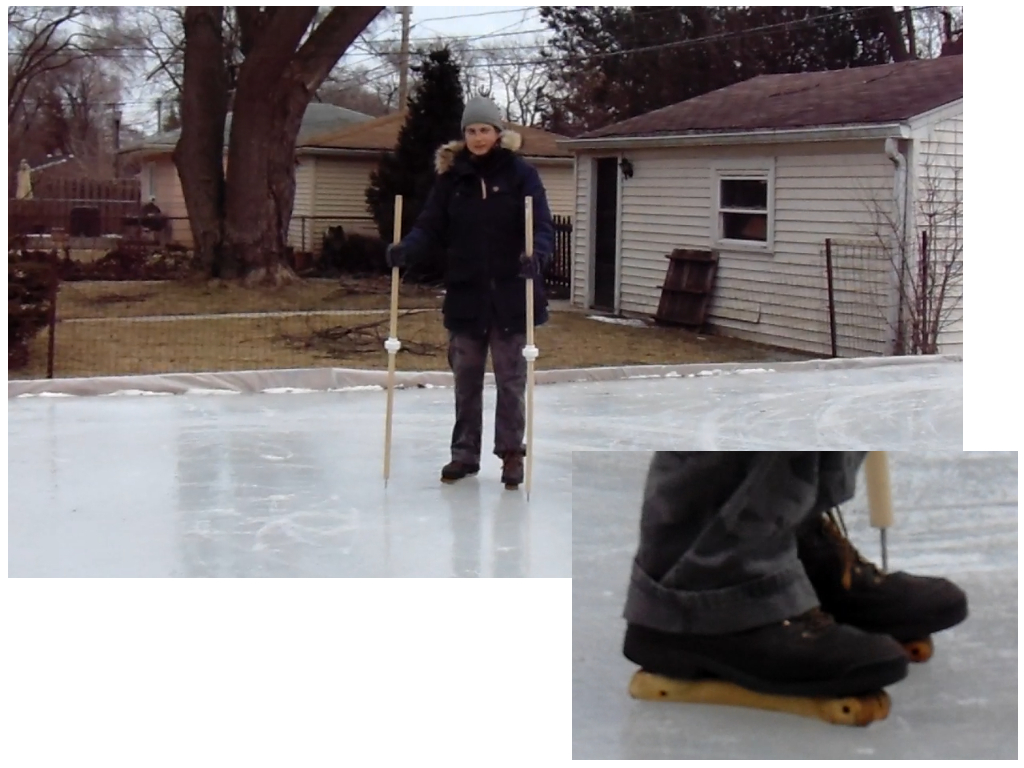
Bone skates have been attracting scholarly interest since 1834, when C. A. Rethaan Macaré identified some artifacts as skates in a presentation to the Zeeland Society of Sciences in the Netherlands. In 1842, Charles Roach Smith and Alfred Smee published a description of a bone skate found in Moorfields, London, in 1840. Smith described the skate’s provenance and listed some of the literary references that have become well-known, and Smee described the condition of the bone.
Interest in bone skates continued with discussions at the Berliner Gesellschaft für Anthropologie, Ethnologie und Urgeschichte and similar antiquarian societies in other locations. This culminated in two papers written around the turn of the last century: Munro (1894) and Herman (1902). Munro attempted “to define their position in early European civilisation with greater precision than has hitherto been done” by summarizing all the information available at that time (1894, 185). Herman’s most exciting contribution was ethnogrpahic information, including pictures. He described bone skates in use in central Europe in the nineteenth century. These two papers are still frequently cited today, even though over a century has passed since then.
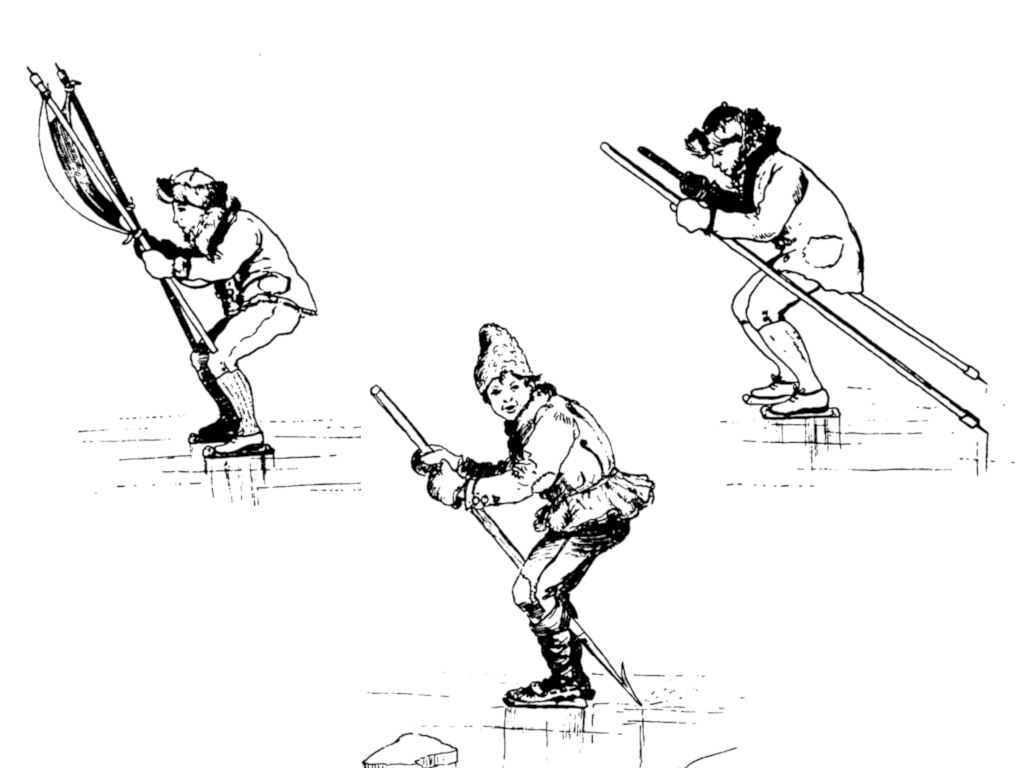
My Skates Made of Bone: A History (2020) is the first book on bone skates. This paper takes a step back from the details presented in the book to look at the big picture. It summarizes the current state of research on bone skates and identifies three interesting directions for future studies:
-
Identification. This has long been a problem, with debates over whether skates are skates, textile smoothers, or other tools raging. It remains difficult to be sure whether a skate-like artifact is a skate or something else.
-
Statistics. Two Swedish researchers, Rune Edberg and Johnny Karlsson, recently completed the first truly large-scale study of bone skates (2015). They did some statistics with their results and reached some interesting conclusions. Let's do this with more skates!
- The East. Archaeologists have thought that bone skates were probably first used in the Eurasian steppes or central Europe since at least the 1970s. What new results are coming?
Identification
You find a bone at in an archaeological excavation, or maybe in a museum's basement or even someone's garage. How do you know it's a skate? This is a problem that goes back to the nineteenth century. Meetings of antiquarian societies featured a broad mix of people including both people describing interesting artifacts they found and trying to figure out whether they were actually skates and people who recalled using bone skates as children in rural areas.
A bit over half a century later, Kjellberg (1940) raised further doubts as to whether bone skates were actually skates because he had trouble skating on them. Gösta Berg, who wrote three papers about bone skates in three languages over the course of 30 years, responded by encouraging Kjellberg to keep at it:
Man kan om dem endast säga att övning ger färdighet och jag är övertygad om att min värderade kollega och vän efter någon tid skulle bli en framstå ende utövare också av denna idrottsgren. (Berg 1943, 86)
(One can only say that repetition leads to skill, and I am certain that my valued colleague and friend would, after a while, also become a skilled practitioner of this sport.)
But it didn't there—Kjellberg was not the last to question their identification. Next, a loud voice from the east joined the conversation. Semenov’s Prehistoric Technology was first published in Russian in 1957 and translated into English in 1964. It gave several reasons why bone skates couldn't possibly have been skates: skaters couldn't attach them to their feet (not all bone skates have binding holes), the wear patterns don't match the wear patterns on modern steel skates, and not all skates have upswept toes. Instead, he proposed a use in the textile industry (Semenov 1964, 192–193).
These reasons are based on a lack of understanding of how bone skates were used. In the 1970s, Arthur MacGregor stepped in with two papers based on an approach that integrated ethnography and archaeology: an experimental study (1975) and a review article (1976). In the former, he directly refuted Semenov by making two pairs of bone skates, skating on them, and showing that the resulting wear patterns matched those found on archaeological specimens. Here's a picture of the wear on one of my skates. You can see that the wear patterns on bone skates are predominantly longitudinal striations.
MacGregor also demonstrated that bindings and upswept toes were unnecessary by skating without them. Looking back a decade after his book, he stressed the importance of his interdisciplinary approach.
The fact that archaeology and ethnology had useful things to say to each other became obvious from the beginning of my interest in animal bones. Having gathered references to archaeological works which “proved” scientifically that certain polished bones from the early medieval period were used in leather working, I was fortunate to discover a more extensive and persuasive ethnographical literature which showed the same objects to be ice-skates, in regular use in certain communities up to to the present century. (MacGregor 1991, 29)
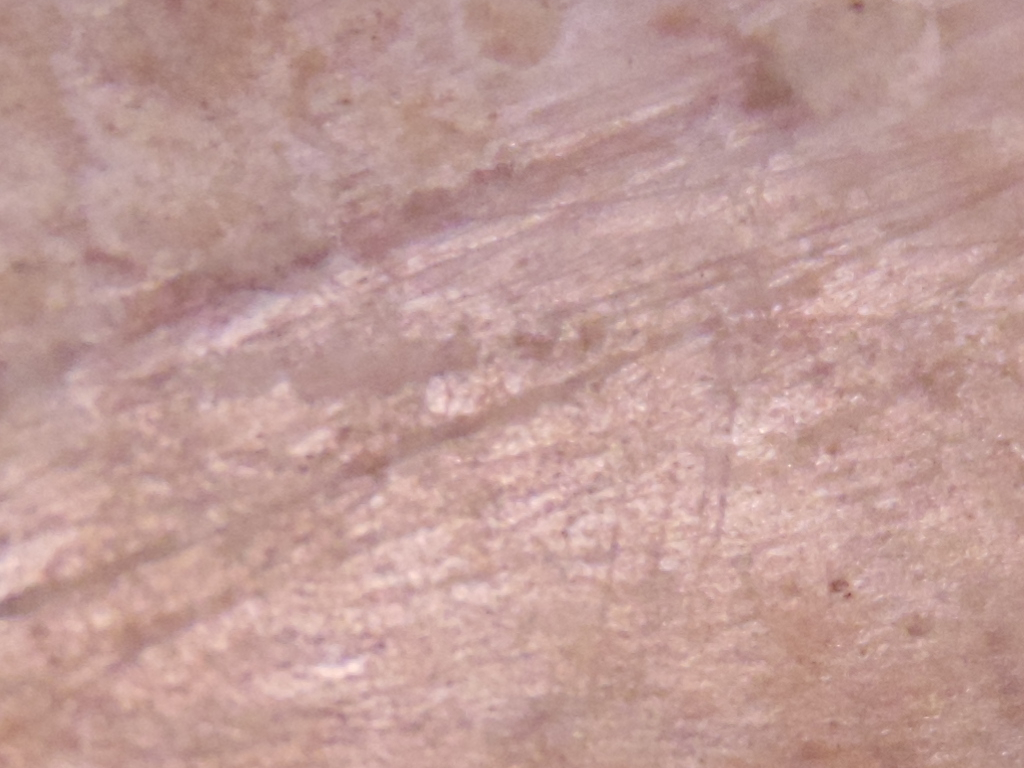
After MacGregor's decisive work, questions continued about how to identify bone skates continued. Cornelia Becker (1990) defined criteria for determining whether a wear pattern was due to skating or textile working based on its location on the bone and orientation. But what if an artifact doesn't have a clear wear pattern? Some skates were never used (see, for example, the skate blanks described by Edberg and Karlsson (2015)), and some wear patterns do not survive. Even when they do survive, it can be hard to tell what produced the wear patterns. Maybe there are other things to look for; Kustár and Tugya (2010) have stressed the importance of holistic interpretation based on all available information.
Identifying skates confidently has been hard and is still hard. As a more recent example, there's a class of radius-based artifacts from central Europe dating mainly to the Middle Bronze Age that were first identified as skates (Lukasiewicz and Rajewski 1938, 46–47), then reinterpreted as tools used in the textile (Rajewski 1950, 173), ceramics (Mogielnicka-Urban 1984, 24), and leather-working (Drzewicz 2004, 81–82) industries. The Early Bronze Age artifacts from Albertfalva, Hungary, that were originally identified as skates by Choyke and Bartosiewicz (2005) seem to fall into this class, but their identification as skates is no longer generally accepted (Choyke 2013, 8).
The outcome is that we still need a really good way to identify skates. A formal flowchart for figuring it out would be useful.
Statistics
The second track is statistical. This is the one I'm the most interested in and see as the most immediate. There are two starting points for this track: a great recent study by two Swedish researchers and an online database.
First, Rune Edberg and Johnny Karlsson (2015) set a great example with their analysis of 679 medieval skates from Birka and Sigtuna. This is the largest study of bone skates to date. They made comparisons on the site level and found that the skates at Birka were generally shorter, simpler, and made from cattle bones instead of horse bones, whereas the skates from Sigtuna were longer, more complex, and more frequently made from horse bones. They concluded that skating was more of a kids' sport at Birka, whereas teenagers also participated at Sigtuna (Edberg and Karlsson 2015, 49).
I thought this was a great idea, and in my book, I tried to follow their example using a great tool available online: the database developed by Hans Christian Küchelmann and Petar Zidarov as they were working on their bone skates project (2003). The online Knochenarbeit-Bone skates database, currently includes a couple thousand medieval bone skates—enough to make statistical analysis possible. There are fewer skates from other eras, which reflects the archaeological evidence. I based my analysis on the skates in this database plus others from the literature.
I was hoping to identify regional skate types based on the features and bone types listed in the database (since skate lengths, which Edberg and Karlsson (2015) focused on, aren't included). Since skates were probably made by children, not professionals, schools of skate-making are unlikely, but children do learn from their peers. I wonder if it might even eventually become possible to identify play-groups or cliques among the children at sites with many skates. To investigate this, in my book, I divided Europe into five regions: Scandinavia, Great Britain, the Northwest, the Northeast, and Central Europe. Because many skates are not fully documented, I focused on the ones that were. Great Britain is the only region with more than 90% of the skates are fully documented, thanks mainly to Arthur MacGregor. Virtually all the skates were found in the area settled by Scandinavians after they arrived, which makes it safe to say they were brought by Scandinavian settlers, who seem to have developed a characteristic British type of skate: horse metapodium skates with the toe pointed and upswept and an axial hole at the heel. This characteristic type says to me that after they settled in Great Britain, Scandinavian skaters developed their own skate type, which implies that they were pretty independent—there probably wasn't too much coming from and going to Scandinavia once they'd settled (Thurber 2020, 104–113).
Once all the skates are fully documented, it should be possible to do this type of analysis for other places. There are 402 skates from Oslo that should provide an interesting counterpoint to Edberg and Karlsson's work on the skates from Birka and Sigtuna. There is also a lot of room for more documentation on the Continent, especially in the Northeast, where only 36% of the medieval skates in the database even have a bone type listed, much less any modifications (Thurber 2020, 105). The situation is a bit better in the Northwest, but I'd like to see details of the skates from this region even more because I think bone skates have the most potential looking forward to produce interesting results there, especially if it turns out to be possible to separate the skates of Scandinavian settlers from the skates of the people who were already there. It’s time to publish the details of all the skates!
The East
The third and final direction I want to talk about is the East. Over a century ago, Munro concluded
that we have no trustworthy evidence in support of the theory that bone skates were ever used in prehistoric Europe. On the contrary, they appear to have been invented by the early Teutonic races who inhabited the shores of the Baltic, and to have been introduced into Britain by the early immigrants who hailed from those regions, possibly the superfluous inhabitants of the Terpen. (Munro 1894, 197)
Now, of course, the picture is different: evidence for a prehistoric origin has been found in the form of numerous skates from the Bronze Age (see, e.g., Choyke and Bartosiewicz (2005)), and the archaeologists who have expressed an opinion in the last century (MacGregor (1976), Bartosiewicz (2003), Choyke and Bartosiewicz (2005), and Küchelmann and Zidarov (2005)) agree that bone skates probably first appeared in central Europe or the steppes, though Wikipedia’s article on ice skating and other popular sources point to Finland. This seems to be due to the influence of Formenti and Minetti (2008), who did a fascinating mathematical analysis but seem unaware of most of the work done on bone skates since Munro's time.
These days, there's a lot of interesting stuff going on with Indo-European origins, and it's all centered on the area where bone skates were probably first used. Is there a link? As more information becomes available, this may be a fruitful avenue for bone skates research. Küchelmann and Zidarov (2005, 432) said they were looking forward to ``interesting new results... from Eastern Europe and Asia'' way back in 2003. I think these results are finally starting to appear.
As one tantalizing example, here's an excerpt from the fascinating abstract of a Russian paper published in 2018:
The place [the Late Bronze Age Rodnikovoye settlement in the steppes] has a small but interesting collection of bone tools. Among all the products found the bone skates for snow and ice skating are of special attention. This category of things has long belonged to tanning production. (Askhatovich and Nikolaevich 2018)
There are a lot of questions for this area. Can more skate-like objects be found there? How is the identification problem being solved? I'm also curious about Semenov's influence in his homeland.
Conclusion
I've gone over three main directions I think bone skates research could take: identification, statistics, and the East. There are other things to do, like analyzing individual interesting skates. There are a Danish skate fragment with a carved human face (Nielsen 1968, 38) and two decorated skates from Birka: one with some scratches that the Swedish History Museum's online catalog says might be a carved boat and one with some interesting ornamentation noted by Edberg and Karlsson (2015, 21). Looking at these skates individually might be interesting, especially in the context of the magic bone Ullr used to “cross the seas... as swiftly as with oars” in Norse mythology (Grammaticus 1980, 79). Rune Edberg and Uaininn O’Meadhra (2016) have recently published an article about ship images on bone artifacts, including one of these skates.
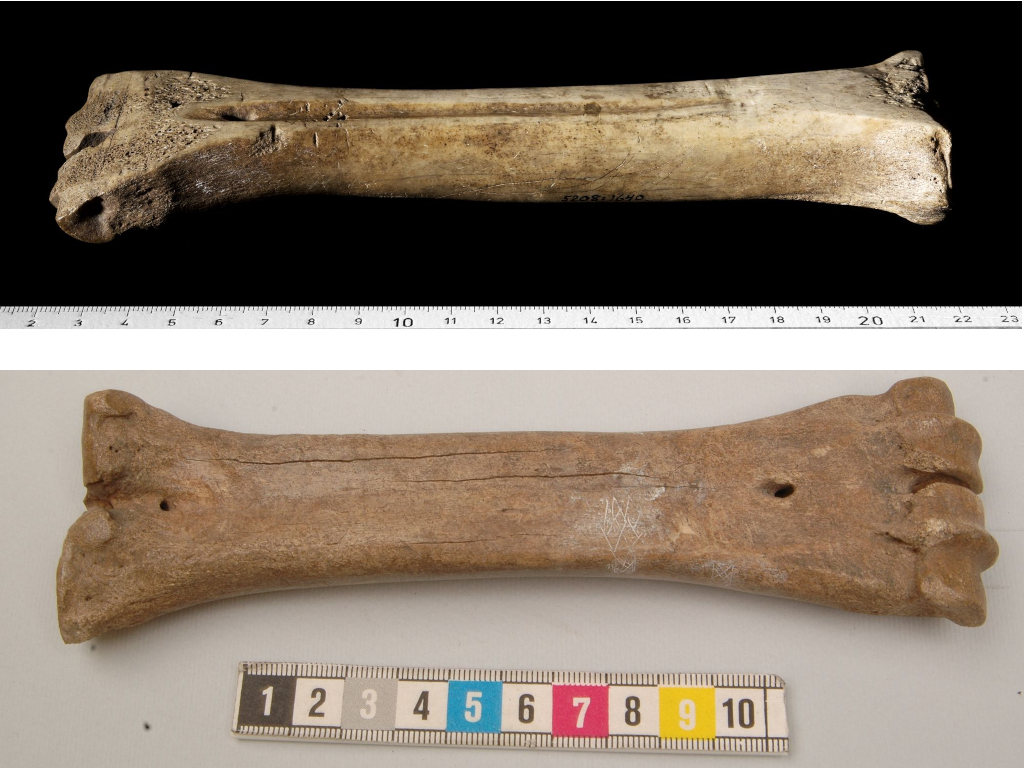
Top: Photograph by Ola Myrin, item 5208-1640-1197905
Bottom: Photograph by Sara Kusmin, item 5208-1638-270021
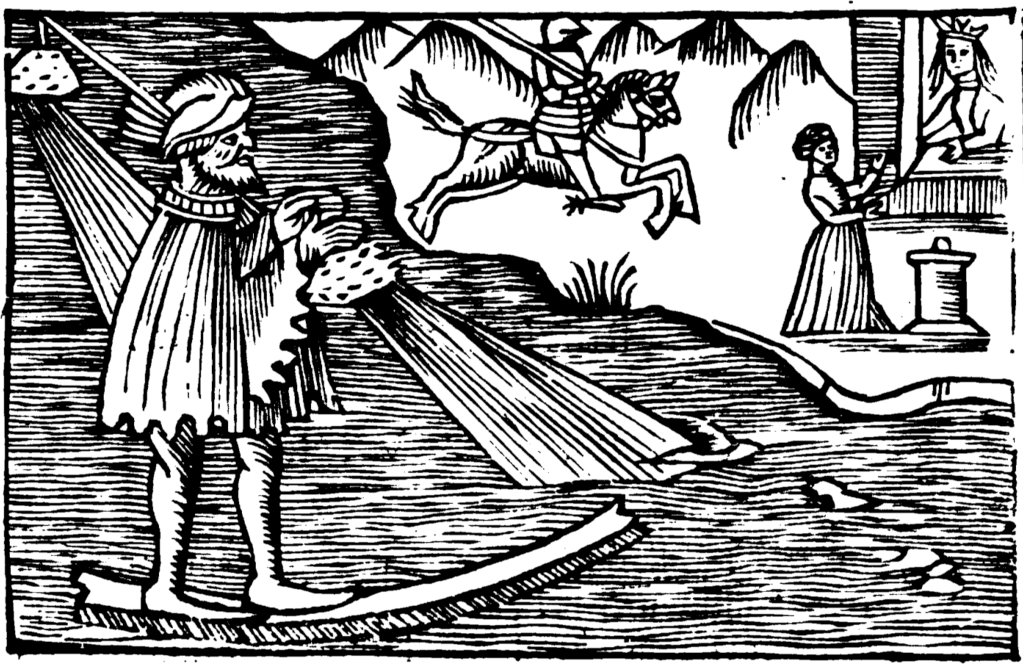
Then there's the question of how much more can be learned from wear patterns. For example, I figured out how to spin on bone skates. I haven't investigated what this does to the wear pattern, but I expect it doesn't create longitudinal striations. I doubt people spun enough to substantially alter the overall wear pattern, but they could have spun enough to leave some traces. And they could have done other tricks, too. I'd like to learn about these if possible. Digging through archives looking for more ethnographic sources is probably the best strategy for finding tricks, but maybe wear patterns can help too.
Perhaps most importantly, it's time to put bone skates into context. Now that we have all this evidence, what can we learn from it?
References
Askhatovich, Fayzullin Ildar, and Usachuk Anatoly Nikolaevich. “Collection of bone-made products from the Rodnikovoye settlement of the Late Bronze Age in Orenburg steppes.” Bulletin of Orenburg State Pedagogical University 3, no. 27 (2018): 172–186.
Bartosiewicz, László. “The Archaeology of Domestic Animals.” In Hungarian Archaeology at the Turn of the Millennium, edited by Zsolt Visy, 60–64. Budapest: Ministry of National Cultural Heritage, Teleki László Foundation, 2003.
Becker, Cornelia. “Bemerkungen über Schlittknochen, Knochenkufen und ähnliche Artefakte, unter besonderer Berücksichtigung der Funde aus Berlin Spandau.” In Festschrift für Hans R. Stampfli, edited by Jörg Schibler, J. Sedlmeier, and H. Spycher, 19–30. Beiträge zur Archäologie, Anthropologie, Geologie und Paläontologie. Basel: Helbing and Lichtenhahn, 1990.
Berg, Gösta. “Isläggar och skridskor.” Fataburen, 1943, 79–90.
Choyke, Alice M. “Hidden Agendas: Ancient Raw Material Choice for Worked Osseous Objects in Central Europe and Beyond.” In From These Bare Bones: Raw Materials and the Study of Worked Osseous Objects, Proceedings of the Raw Materials Session at the 11th ICAZ Conference, Paris, 2010, edited by Alice Choyke and Sonia O'Connor, 1–11. Oxford: Oxbow Books, 2013.
Choyke, Alice M., and László Bartosiewicz. “Skating with Horses: Continuity and Parallelism in Prehistoric Hungary.” Revue de Paléobiologie spéc. 10 (2005): 317–326.
Drzewicz, Anna. Wyroby z kości i poroża z osiedla obronnego ludności kultury łużyckiej w Biskupinie. Warsaw: Wydawnictwo naukowe ‘semper', 2004.
Edberg, Rune, and Johnny Karlsson. Isläggor från Birka och Sigtuna. En undersökning av ett vikingatida och medeltida fyndmaterial. Stockholm Archaeological Reports 43. Stockholm: Institutionen för arkeologi och antikens kultur, Stockholms universitet, 2015.
Edberg, Rune and Uaininn O’Meadhra. “Vikingatida skeppsgraffiti från Birka och Sigtuna.” Situne Dei: Årsskrift för Sigtunaforskning och historisk arkeologi, 2016, 6–13.
Formenti, Federico, and Alberto E. Minetti. “The First Humans Travelling on Ice: An Energy-Saving Strategy?” Biological Journal of the Linnean Society 93 (2008): 1–7. doi:10.1111/j.1095-8312.2007.00991.x.
Grammaticus, Saxo. The History of the Danes, Books I–IX. Translated by Hilda Ellis Davidson and Peter Fisher. Cambridge: D. S. Brewer, 1980.
Herman, Otto. “Knochenschlittschuh, Knochenkufe, Knochenkeitel: Ein Beitrag zur näheren Kenntnis der prähistorischen Langknochenfunde.” Mittheilungen der anthropologischen Gesellschaft in Wien 32 (1902): 217–238.
Kjellberg, S. T. “Gnida, mangla och stryka.” Kulturen, 1940, 68–91.
Küchelmann, Hans Christian, and Petar Zidarov. “Let's Skate Together! Skating on Bones in the Past and Today.” In From Hooves to Horns, from Mollusc to Mammoth: Manufacture and Use of Bone Artefacts from Prehistoric Times to the Present, Proceedings of the 4th Meeting of the ICAZ Worked Bone Research Group at Tallinn, 26th-31st of August 2003, edited by Heidi Luik, Alice M. Choyke, Colleen Batey, and Lembi Löugas, 425–445. Muinasaja Teadus 15. Tallinn: Ajaloo Instituut, 2005.
Kustár, Rozália, and Beáta Tugya. “’Csontkorcsolyák' a késő bronzkorban (Bone `Skates' in the Late Bronze Age).” In Csont és bőr: Az állati eredetű nyersanyagok feldolgozásának törtnéte, régészete é néprajza (Bone and Leather: History, Archaeology and Ethnography of Crafts Utilizing Raw Materials from Animals), edited by János Gömöri and Andrea Kőrösi, 79–84. Anyagi kultúra a Kárpát-medencében. Budapest: Magyar Tudományos Akadémia Veszprémi Akadémiai Bizottsága (MTA VEAB), 2010.
Lukasiewicz, Kazimierz, and Zdzlisaaw Rajewski. “Przedmioti rogowe i kościane z grodu kultury ‘lużyckiej’ w Biskupinie. In Gród prasłowiański w Biskupinie w powiecie żnińskim. Sprawozdanie z prac wykopaliskowych w latach 1937 i 1937 z uwględnieniem lat 1934–1935, edited by Józefa Kostrzewskiego, 46–54+plates. Poznań: Nakladem instytutu prehistorycznego uniwersytetu poznańskiego, 1938.
MacGregor, Arthur. “Bone Skates: A Review of the Evidence.” Archaeological Journal 133 (1976): 57–74.
MacGregor, Arthur. “Bone, Antler and Horn: An Archaeological Perspective.” Journal of Museum Ethnography 2 (1991): 29–38.
MacGregor, Arthur. “Problems in the Interpretation of Microscopic Wear Patterns: The Evidence from Bone Skates.” Journal of Archaeological Science 2 (1975): 385–390.
Mogielnicka-Urban, Maagorzata. Warsztat ceramiczny w kulturze łużyckiej. Wrocław: Zakaad Narodowy imienia Ossolińskich, 1984.
Munro, Robert. “Notes on Ancient Bone Skates.” Proceedings of the Society of Antiquaries of Scotland 28 (1894): 185–197.
Nielsen, E. Levin. “Pedersstraede i Viborg: Købstadarkaeologiske undersøgelser 1966/67.” Kuml 18, no. 18 (1968): 23–81.
Rajewski, Z. “Przedmioty z kości i rogu i obróbka obu surowców w grodach ‘łużyckich’ z wczesnego okresu żelaza.” Sprawozdanie z prac wykopaliskowych w grodzie kultury Łużyckiej w Biskupinie w Powiecie Żnińskim (Poznań) 3 (1950): 171–185.
Semenov, S. A. Prehistoric Technology: An Experimental Study of the Oldest Tools and Artefacts from Traces of Manufacture and Wear. Translated by M. W. Thompson. Bath: Adams and Dart, 1964.
Smith, Charles Roach, and Alfred Smee. “Bone Skate Found at Moorfield.” Archæologia, or Miscellaneous Tracts Relating to Antiquity 29 (1842): 397–399.
Thurber, B. A. Skates Made of Bone: A History. Jefferson, NC: McFarland, 2020.